.

Leonidas Monument [Source]
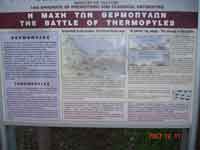
The Battle of Thermopylae of 480 BC set an alliance of Greek city-states against an invading Persian army. Though vastly outnumbered, the Greeks held back the Persian advance until a defector informed the Persians of an alternate route, leading to the defeat of the Greek army and the sacking of Athens.
Background
Xerxes I, king of Persia, had been preparing for years to continue the war against the Greeks started by his father Darius. In 484 BC the army and navy of Xerxes arrived in Asia Minor and built a bridge of ships across the Hellespont at Abydos to march his troops across. According to Herodotus, Xerxes had over five million men, while the poet Simonides estimated three million; Herodotus also wrote that the army drank entire rivers and ate the food supplies of entire cities. While these are certainly exaggerations, it is clear the Greeks were enormously outnumbered.
A confederate alliance of Greek city-states was quickly formed, headed by the militaristic Sparta, whose supremely disciplined warriors were trained from birth to be amongst the best soldiers in the world at that time. The Spartan soldiers had mastered the phalanx formation - essentially a tight wall of overlapping shields. The Greek states held back from sending the full force of their armies, however, citing religious reasons. Fearing an uprising of their huge slave population, and fearful of going to war before the conclusion of the Carneia festival, the deeply superstitious Spartans contributed only a small force of 300 hoplites, hand-picked and commanded by King Leonidas. Knowing the likely outcome of the battle, Leonidas selected his men on one simple criteria: he took only men who had fathered sons that were old enough to take over the family responsibilities of their fathers.
Because of its defensible terrain, the mountain pass of Thermopylae, the "Hot Gates", was chosen as the site of battle. At the time it consisted of a pass so narrow two chariots could barely move abreast--one side stood the sheer side of the mountain, while the other was a cliff drop into the sea. Along the path was a series of three "gates," and at the center gate a short wall was hastily erected by the Greek army to aid in their defense. It was here in the August of 480 BC that an army of some 7000 Greeks, led by 300 Spartans, stood to receive the full force of the Persian army, numbering perhaps some forty times its size.
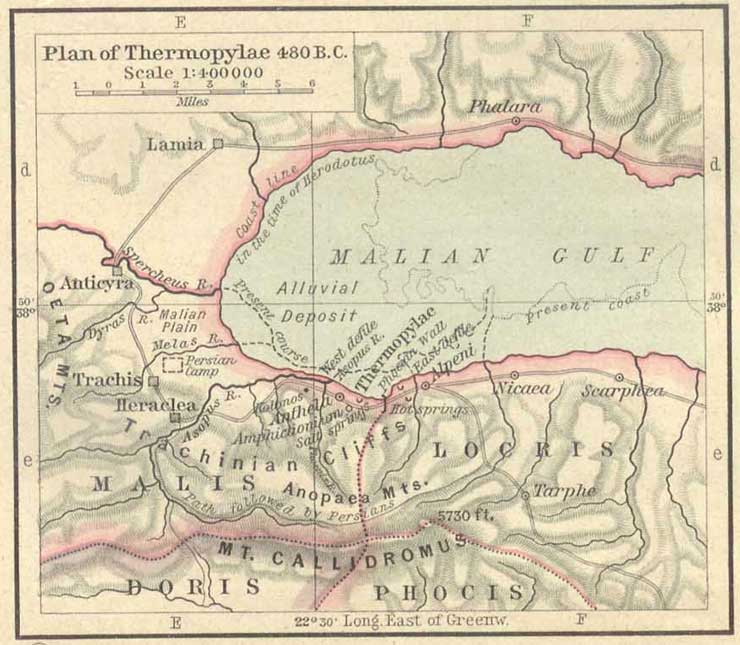
Battle
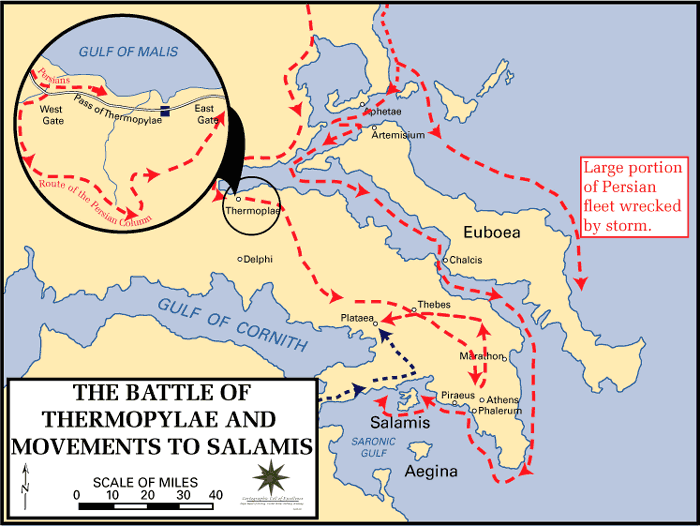
Xerxes did not believe such a small force would oppose him, and gave the Greeks three or four days to retreat. The Persians were initially astounded upon seeing the Spartans oiling themselves and performing calisthenics, not understanding its ritual significance, performed by men with the resolution to fight to the end. Meanwhile, the Persian army was growing restless, and Xerxes sent his troops into the pass with hellish results. The Persians, with arrows and short spears, could not break through the long spears of the Greek hoplites' phalanx. Enormous casualties were sustained by the Persians as the disciplined Spartans orchestrated a series of feint retreats, followed by a quick turn back into formation. Greek morale was high. Herodotus wrote that when Dienekes, a Spartan soldier, was informed that Persian arrows blotted out the sun, he remarked with characteristically laconic prose, "So much the better, we shall fight in the shade." The 6000 Greeks defending the pass slew the Persians in a similar manner on the second day of battle, fighting in a relay manner. After watching his troops fall before the Greeks, Xerxes decided to send his legendary Immortals, so named for their fierce fighting and impenetrable line. Whenever one would fall, another would quickly fill the gap in the ranks. However, even the Immortals lacked the power to break the Spartan phalanx.
After the second day a Greek named Ephialtes defected to the Persians and informed Xerxes of a separate path through Thermopylae. The pass was defended by the other 1000 Greeks, from Phocis, who had been placed there when the Greeks learned of the alternate route just before the battle, but they were not expecting to engage the Persians. The Phocians offered a brief resistance before fleeing, and the Persians advanced unopposed.

Leonidas then realized that further fighting would be futile. On August 11 he dismissed all but the 300 Spartans. A contingent of Thespians, led by Demophilus, stayed as well in a suicidal effort to delay the advance. Leonidas also had a force of Thebans, but after some fighting they defected to the Persians. Although the Greeks killed many Persians, including two of Xerxes' brothers, Leonidas was eventually killed, along with all 300 of his men. The last Spartans were killed by a barrage of arrows after fighting fanatically to recover their king's body, having been driven back into the narrowest part of the pass onto a small hill.
There is an epitaph on a monument at site of the battle with Simonides's epigram, which can be found in Herodotus's work The Histories (7.228), to the Spartans:
ὦ ξεῖν', ἀγγέλλειν Λακεδαιμονίοις ὅτι τῇδε κείμεθα τοῖς κείνων ῥήμασι πειθόμενοι.
(O xein', angellein Lakedaimoniois hoti täde keimetha tois keinon rhämasi peithomenoi.)
Which to keep the poetic context can be translated as:
Go tell the Spartans, stranger passing by, that here, obedient to their laws, we lie
or more literally as:
Oh foreigner, tell the Lacedaemonians that here we lie, obeying those words.
Another translation (by Michael Dodson, 1951) captures the spirit of enduring service to the state which was taught to all Spartan warriors:
Friend, tell the Spartans that on this hill we lie obedient to them still.
|
Battle of Thermopylae |
||
|---|---|---|
|
Conflict |
Persian Wars |
|
|
Date |
August, 480 BC |
|
|
Place |
Thermopylae |
|
|
Result |
Persian pyrrhic victory |
|
|
Combatants |
||
|
Greek city-states |
Persia |
|
|
Commanders |
||
|
Strength |
||
|
About 7000 |
Herodotus claims a total strength of 3.4 million; today's estimates range from 250,000 to 300,000 |
|
|
Casualties |
||
|
At least 300; likely over 2000 |
Possibly 20 000 |
|
|
Battle before |
Battle after |
|
Aftermath
While a technical victory for the Persians, the enormous casualties caused by a few thousand Greeks was a significant blow to the Persian army. Likewise, it significantly boosted the resolve of the Greeks to face the Persian onslaught. The simultaneous naval Battle of Artemisium was a draw, whereupon the Greek (or more accurately, Athenian) navy retreated. The Persians had control of the Aegean Sea and all of Greece as far south as Attica; the Spartans prepared to defend the Isthmus of Corinth and the Peloponnese, while Xerxes sacked Athens, whose inhabitants had already fled to Salamis Island. In September the Greeks defeated the Persians at the naval Battle of Salamis, which led to the rapid retreat of Xerxes. The remaining Persian army, left under the charge of Mardonius, was defeated at Plataea by a combined Greek army again led by the Spartans, under the regent Pausanias. The Persians, never to return to Greece, were soon to fall under the shadow of Alexander the Great.
Legends
The legend of Thermopylae, as told by Herodotus, has it that Sparta consulted the Oracle at Delphi before setting out to meet the Persian army. The Oracle is said to have made the following prophecy in hexameter verse:
“O ye men who dwell in the streets of broad Lacedaemon!
Either your glorious town shall be sacked by the children of Perseus,
Or, in exchange, must all through the whole Laconian country
Mourn for the loss of a king, descendant of great Heracles.
He cannot be withstood by the courage of bulls nor of lions,
Strive as they may; he is mighty as Jove; there is naught that shall stay him,
Till he have got for his prey your king, or your glorious city.”
In essence, the Oracle's warning was that either Sparta would be conquered and left in ruins, or one of her two hereditary kings must sacrifice his life to save her.
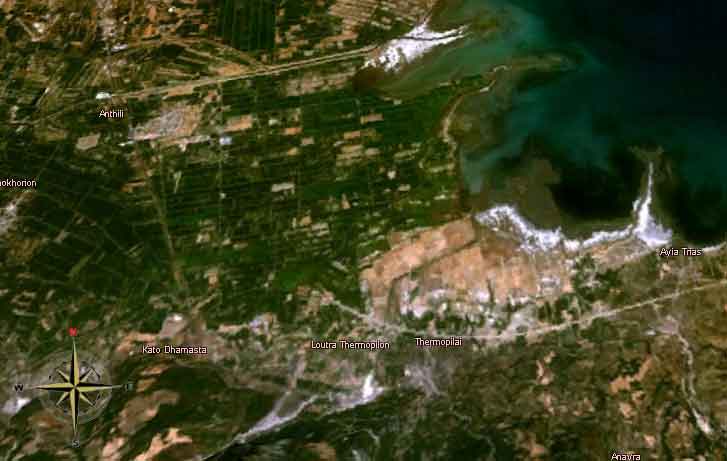
Thermopylae, Greece Satellite images
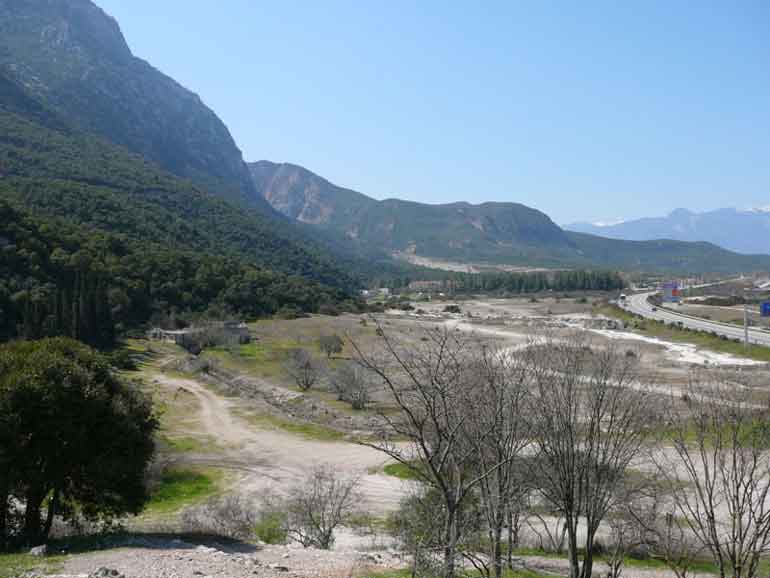
View of the Thermopylae pass at the area of the Phocian Wall. In ancient times the coastline was where the modern road lies, or even closer to the mountain. (Source)

Battle of the Thermopylae

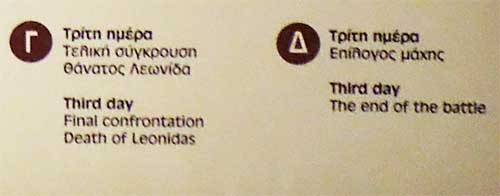
Inspiration
Cultural reference
Thermopylae has been used as a name for ships among Greek shipowners repeatedly in the modern era. Furthermore a clipper ship, 212 feet in length and displacing 91 tonnes,was launched in Aberdeen in 1868. Christened Thermopylae, it established speed records, and was notable for having a male figurehead wearing armor, helmet, shield and sword.
The battle of Thermopylae is often seen as the beginning of organised resistance against the confiscation of arms and, as such, has become a legend amongst pro-gun activists. The battle of Thermopylae also spawned the phrase molon labe.
Poetry and song
Lord Byron refers to Thermopylae in this poem:
Earth! render back from out thy breast
A remnant of our Spartan dead!
Of the three hundred grant but three,
To make a new Thermopylae!
(Don Juan. Canto iii. Stanza 86. 7)
A. E. Housman wrote a poem called The Oracles which can be found in his book "Last Poems" the last verse of which is:
The King with half the East at heel is marched from land of morning;
Their fighters drink the rivers up, their shafts benight the air,
And he that stands will die for nought, and home there's no returning.
The Spartans on the sea-wet rock sat down and combed their hair.
The decaying, regretful speaker of T. S. Eliot's "Gerontion" observes:
I was neither at the hot gates
Nor fought in the warm rain
Nor knee deep in the salt marsh, heaving a cutlass,
Bitten by flies, fought.
The Greek poet Kavafis who lived in Alexandria of Egypt at the turn of the 20th century wrote one of his more famous poems entitled "Thermopylae" in 1903:
Τιμή σ' εκεινους όπου στην ζωή των
ώρισαν να φυλάγουν Θερμοπύλες.
Πότε από το χρέος μη κινούντες΄
δίκαιοι κ' ίσοι,σ'ολες των τες πράξεις,
αλλά με λύπη κιόλας κ' ευσπλαχνία,
γενναίοι οσάκις είναι πλούσιοι κι όταν
είναι πτωχοί, πάλ' εις μικρόν γενναίοι,
πάλι συντρέχοντες, όσο μπορούνε΄
πάντοτε την αλήθεια ομιλούντες,
πλην χωρίς μίσος για τους ψευδωμένους.
Και περισσότερη τιμή τους πρέπει
όταν προβλέπουν (και πολλοί προβλέπουν)
πως ο Εφιάλτης θα φανεί στο τέλος,
και οι Μήδοι επί τέλους θα διαβούνε.
Which can be translated as:
Let honor be to those in whose life
it was set to guard Thermopylae.
Never moving away from duty;
Just and equals in all of their acts
But with sadness and compassion
Brave once they are rich and when
They are poor, again brave
Coming to aid as much as they can;
Always speaking the truth
But without hate for those who lie.
And even more honor they deserve
When its predicted (and many predict)
That Ephialtes will appear in the end
And the Medes will finally pass through
This poem actually created the expression guarding Thermopylae and has been told in honor of other dead, like those of the Imia crisis
Sylvia Plath's poem "Letter in November" refers to Thermopylae, as does Emily Dickinson's "'Go tell it' — what a message."
The first verse of Thomas Osborne Davis (Irish politician)' "A Nation Once Again" refers to the Battle of Thermopylae:
When boyhood's fire was in my blood
I read of ancient free men
In Greece and in Rome where bravely stood
300 men and three men
Dimitris Varos Ω ξείν… (O stranger) is a poetic book written in 1974.
The National Anthem of Colombia refers to the battle (IX Stanza):
La patria así se forma
Termópilas brotando;
constelación de Cíclopes
su noche iluminó
Which can be translated as
And so the nation forms
Thermopylae springing;
a Cyclops constellation
its night enlightened
Novels
Steven Pressfield in Gates Of Fire, depicts the battle as told by a squire of Dienekes, who had been wounded during the fight, but was revived to tell Xerxes of the Spartans' heroism.
Paul Cartledge The Spartans, published in 2002, includes a fairly detailed description of the battle fought at Thermopylae, the personal stories of Dienekes, King Leonidas and a wealth of information about Sparta.
Gene Wolfe's novels Soldier of the Mist (1986) and Soldier of Arete (1989) are narrated by Latro, a soldier who fought on the Persian side at Plataea (after Thermopylae) and suffered a serious head wound there, which makes him forget everything after 24 hours.
German author and Nobel Prize in Literature recipient Heinrich Böll wrote a story Wanderer, kommst Du nach Spa..., (published in 1950), which takes its title from the German translation of the inscription on the Spartans' tomb. In it a young German soldier at the end of the Second World War is wounded on the Eastern Front and is brought to a field hospital which was a school. He wonders if it could be his school, which he only recently left to become a soldier. On seeing the partially erased quotation of the title on a chalkboard, his question is answered.
Eric Nylund in "Halo: The Fall of Reach" refers to the Thermopylae battle, although in book the Spartans come out victorious.
The graphic novel 300, written and illustrated by Frank Miller (with painted colors by Lynn Varley) depicts the Battle of Thermopylae and the events leading up to it from the perspective of Leonidas. The comic was particularly inspired by the film The 300 Spartans, and is now itself being made into a movie called 300.
John Ringo's Ghost, published in 2004, includes a description of the battle fought at Thermopylae, and quotes Simonides' epigram.
Valerio Massimo's book The Spartan also gives an account of the Battle of Thermopylae. The novel uses the battle to set up one of the protagonists who is apparently sent out on a mission by King Leonidas before the final Persian attack.
Movies
The 1962 film The 300 Spartans depicts the Battle of Thermopylae.
The 1978 film Go Tell the Spartans makes direct reference to Thermopylae, comparing the French defenders of a Vietnamese village to the Spartans, and forecasting the same result for a later generation of American soldiers. In this case, the technology is on the side of the defenders.
The upcoming film 300 is based on Frank Miller's graphic novel 300, a retelling of the battle from the perspective of Leonidas.
In the 2003 film The Last Samurai, Captain Nathan Algren reflects on the Battle of Thermopylae before engaging in a similar battle between traditional Japanese samurai and a far superior modernized army equipped with firearms and cannons. In the movie, Algren states that 300 Greek soldiers held off a million Persian warriors, until they lost their will to fight. The Samurai leader, Katsumoto, expressed his admiration for the bravery of the Greek warriors. Later, when Katsumoto asked what happened to the warriors at Thermopylae, Algren replies bluntly, "Dead to the last man".
Links
The battle in Herodotus' Histories Book VII
Map of the battlefield (http://members.ozemail.com.au/~ancientpersia/thermopylae.html)
Size of the Persian army (http://www.iranchamber.com/history/articles/persian_wars5.php)
THE BATTLE OF ISURAVA- AUSTRALIA'S THERMOPYLAE
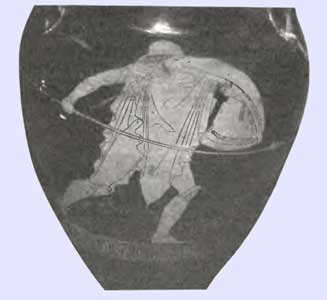
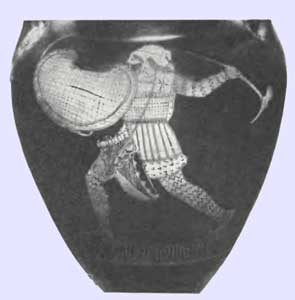
Greek versus Persian
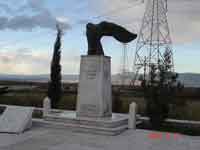
Monument for the 700 Thespians
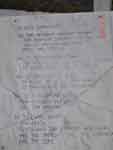
Inscription of the Monument for the 700 Thespians

Arrow and Spear Heads used in the Battle of Thermopylae
Images
Films
| Ancient Greece
Science, Technology , Medicine , Warfare, , Biographies , Life , Cities/Places/Maps , Arts , Literature , Philosophy ,Olympics, Mythology , History , Images Medieval Greece / Byzantine Empire Science, Technology, Arts, , Warfare , Literature, Biographies, Icons, History Modern Greece Cities, Islands, Regions, Fauna/Flora ,Biographies , History , Warfare, Science/Technology, Literature, Music , Arts , Film/Actors , Sport , Fashion --- |
Retrieved from "http://en.wikipedia.org"
All text is available under the terms of the GNU Free Documentation License

